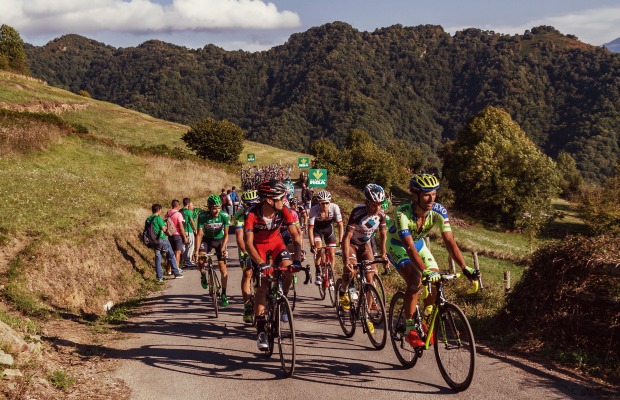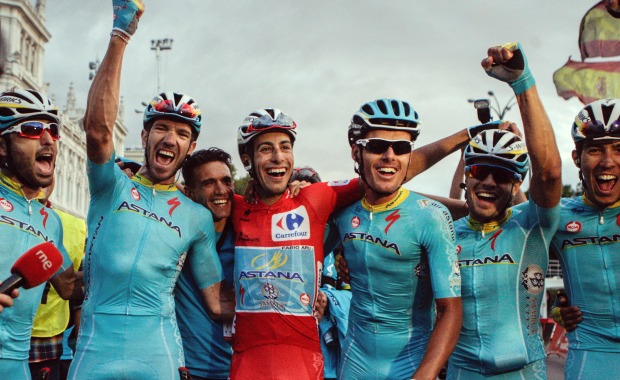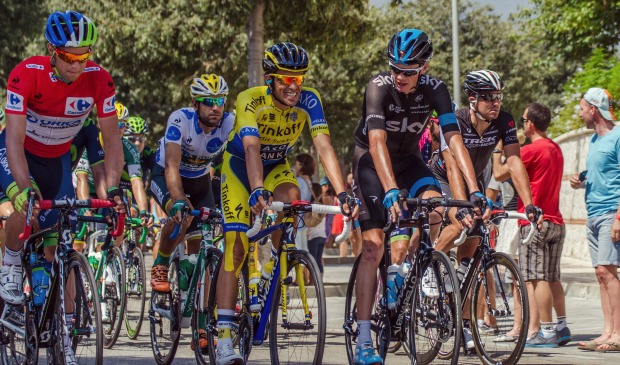
The last of the cycling season’s grand tours, the Vuelta a Espana promises to end the season with a bang. From top contenders to key stages to each of the leaders’ jerseys, here’s everything you need to know to keep up with the convo during your Saturday shop rides.
Race Overview
The 71st edition of the Vuelta a Espana begins Aug. 20, when riders will tackle 21 stages over 23 days and cover a total of 2,060 miles. Below are a few of the highlights of this year’s route:
— Of the 21 stages, 12 are classified as hill or mountain stages.
— There will be 10 summit finishes, one more than the 2015 edition and six more than this year’s Tour de France.
— All totaled, the race will crest 51 summits.
— The race will begin with a 39 km team time trial on Aug. 20 and culminates in a decisive individual time trial during the race’s third week.
— The Mas de la Costa on Stage 17 averages a gradient of 15 percent for 4 km, with sections kicking as steep as 22 percent.
— For the sprinters, there will be seven flat stages to show off their top-end speed at the finish.
The Jerseys

Overall victory isn’t the only prize riders will fight for on the road. Stage victories and the chance to claim one of the leader’s jerseys will reward competitors with plenty of prize money, too. Here’s what’s up for grabs:
— Red Jersey: Originally orange in the 1935 inaugural race, the maillot rojo is worn by the cyclist with the lowest overall aggregate time—or, the leader of the general classification.
— Green Jersey: Like the Tour de France, the green jersey is given to the rider with the most points accumulated from finishing and intermediate sprints.
— Polka Dot Jersey: A white jersey with blue dots, this jersey is given to the best climber of the race—the King of the Mountains. Like the green jersey, the polka dot jersey is based on a point system. But instead of sprints, riders accumulate points for cresting each summit in the highest position on the road.
— White Jersey: Known as the “all-rounder,” this jersey is awarded to the rider who places the highest in a combination of the overall classification, the polka dot jersey competition and the green jersey competition.
Important Stages

With two time trials and 10 summit finishes, there won’t be too many days for the GC contenders to sit back and take it easy. Here are a few of the key stages you won’t want to miss:
— Stage 10: Featuring the first Hors Categorie climb of the Vuelta at the finish in Lagos de Covadonga, this stage will almost certainly see the big names gunning for overall glory. It also falls just before a rest day, so the competitors won’t be worried about saving something for the following day’s efforts.
— Stage 14: One of the most exciting stages on tap for this year’s race, Stage 14 crosses into France before a summit finish on the Col d’Aubisque. Riders will have to crest three Category 1 climbs, which should make for tired legs and an unpredictable finish.
— Stage 19: With climbs littered throughout this year’s Vuelta, this mostly flat 39 km individual time trial from Javea to Calpe will be an opportunity for TT specialists to take some time back from the pure climbers. It also falls toward the end of the race and could end up playing a decisive role in this year’s red jersey winner.
— Stage 20: Before the finish in Madrid, riders will have one more chance to separate themselves from the other contenders on the final summit finish atop the Alto de Aitana—which is the same climb that decided last year’s race.
The Contenders

Even with the Olympics closely following the Tour de France, most of cycling’s biggest stars are heading to the Vuelta, which normally isn’t the case. Here are a few that will be looking to capture the top spot on the podium:
— Chris Froome: Finishing second in 2011 and 2014, Froome has never won the Vuelta. But if his Tour de France performance this year is any indication, he’s going to be tough to beat. However, Froome’s tired legs from his recent quest for Olympic glory could be a factor.
— Nairo Quintana: Even with a third place finish, Quintana’s performance in the Tour de France was largely seen as disappointing. However, the Vuelta seems tailor-made for the Columbian, where steep gradients and plenty of long climbs should suit his riding style. Will this be the race when he finally tops Froome and his army of Sky-bots?
— Alberto Contador: Contador suffered through some bad luck early in the Tour de France, forcing him to abandon early. Fully recovered, he’ll have his sights set on an overall victory in what could be his final grand tour race. He won’t be afraid to attack Froome and Quintana, and should be better rested than most of his competitors.
— Estaban Chaves: Quintana isn’t the only Columbian climber to keep an eye on. Chaves was ever so close to winning the 2016 Giro d’Italia in May, finishing second and losing the race on the queen stage to Vincenzo Nibali. He didn’t race this year’s Tour de France, opting instead to focus on the Vuelta. Chaves has the talent to ride with the best in the world, and with a little luck, this could be his year to claim the red jersey.
In cycling, the unexpected almost always happens. A few of this year’s dark horse contenders for overall victory include Tejay van Garderen, Thibaut Pinot and Mikel Landa.
 Ready to ride? Search for a cycling event.
Ready to ride? Search for a cycling event.

